Adjusting the idle speed on your motorcycle is an essential skill that every rider should know.
Improperly set idle speed can affect your bike's performance, causing it to stall or run roughly.
In this article, we will guide you through adjusting your motorcycle's idle speed so you can have a smooth and efficient ride every time.
By understanding how to adjust the idle speed on your motorcycle, you'll extend your engine's life and improve your riding experience.
What is Motorcycle Idle Speed?
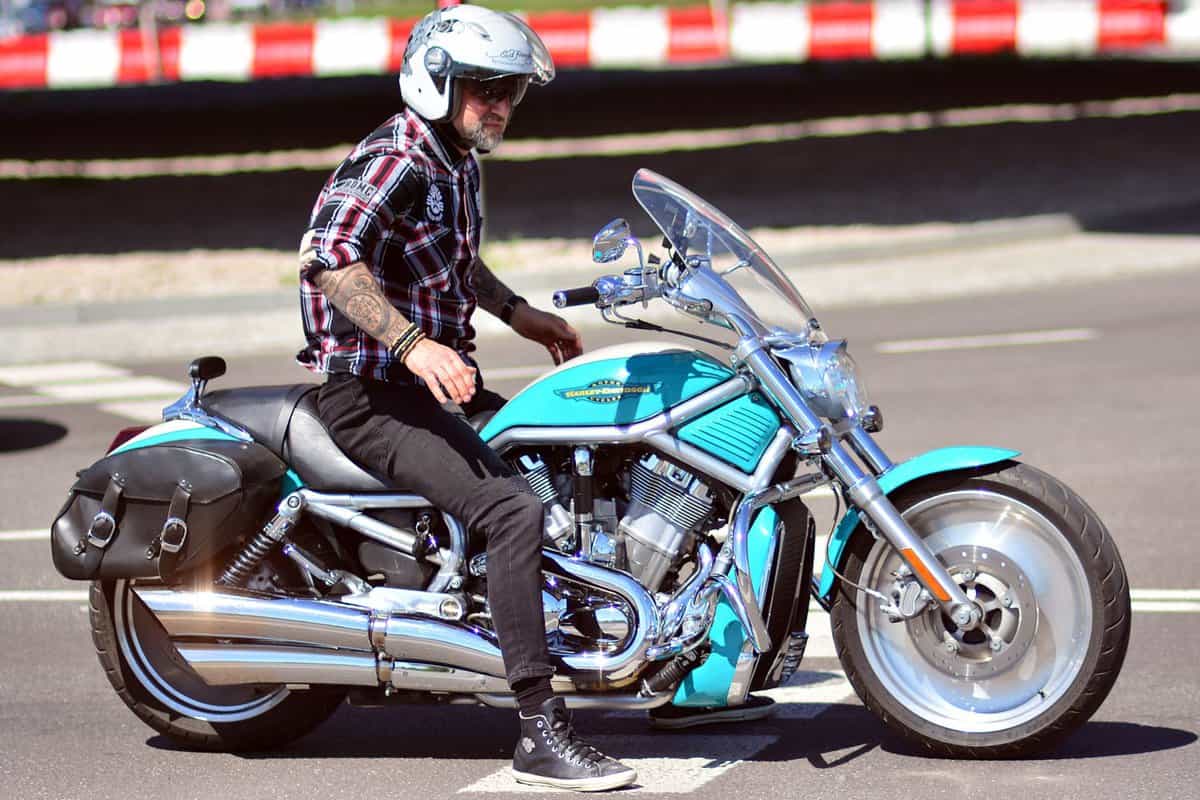
Motorcycle idle speed refers to the engine's rotational speed when your bike is at a standstill and you're not twisting the throttle.
When you fire up your motorcycle, you'll notice the engine's rhythm and speed. This is the idle speed, usually measured in revolutions per minute (RPM).
For most bikes, the ideal idle speed is between 700-1,000 RPM.
Maintaining the correct idle speed ensures a smooth ride and prevents your motorcycle from stalling or running inefficiently.
Adjusting idle speed is a simple process that anyone can do, regardless of their mechanical skills.
You might also like: Motorcycle Safety Gear Checklist [7 Must Haves!]
How to Adjust Idle Speed on a Motorcycle
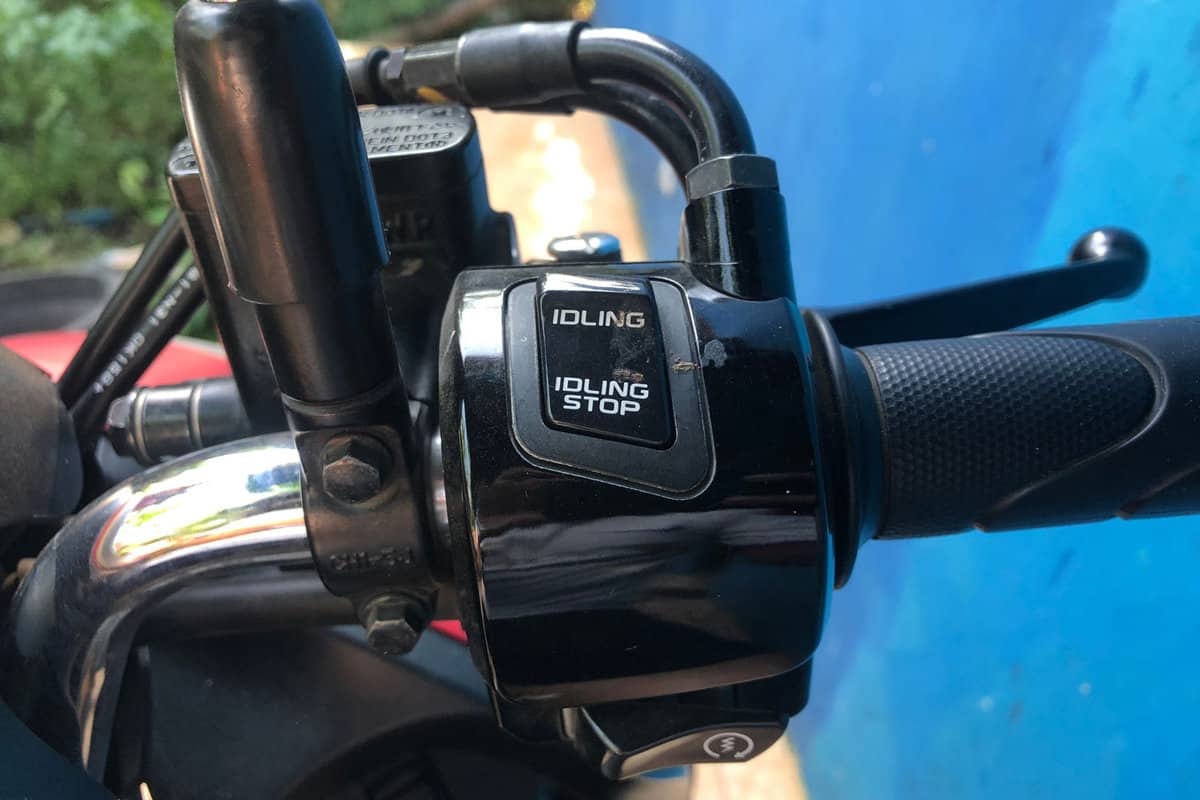
Step 1: Find Out the Recommended Idle Speed by Checking the Manual
To start, you need to find out the recommended idle speed for your motorcycle. This information can be found in your motorcycle's manual.
But generally, the ideal RPM settings are usually around 700-1,000 RPM.
Step 2: Locate Your Motorcycle’s Carburetor
Find the carburetor on your motorcycle, which is responsible for mixing air and fuel before entering the engine.
To locate your motorcycle's carburetor, refer to the manual and check the diagram provided. This will give you a better understanding of where the carburetor is located.
The carburetor is a metal component with a port on the side and a pipe on top. You can easily find it underneath or next to the engine compartment.
Step 3: Find the Idle Screw
Next, locate the idle screw. One way to find it is by looking near the base of the float bowl for a spring.
The float bowl is a small gas tank at the carburetor's bottom. Look around for a screw that is connected to the float bowl at a one to two-inch coil. This is the idle screw.
Depending on your motorcycle, the coil may rest vertically or horizontally, leading into the carburetor's body.
Remember that the idle screw could be located on either side of the bike, so if you can't find it, try checking the other side.
For some fuel-injected motorcycles, there may be a knob at the side of the bike close to the engine compartment.
The knob is the idle screw which you can turn clockwise or counterclockwise to adjust the speed.
Step 4: Remove Any Trim or Panel that is Blocking Access to the Screw
In some cases, you may find that a trim or panel is blocking access to the idle screw. If this is the case, you must remove the trim to reach the screw carefully.
You can use a socket wrench to remove the bolts or screws holding the panel in place.
Once the bolts or screws have been removed, you can gently remove the panel from the bike.
Some motorcycle panels and trim may have clips that attach them to the bike's frame. You can easily remove the clips by applying pressure to the sides to lift the panel out.
Step 5: Turn on Your Motorcycle
Before adjusting the idle speed on your motorcycle, you should let the engine warm up to its normal operating temperature.
To do this, turn your motorcycle on and wait for at least 2 to 3 minutes for the engine to reach a stable temperature. You can put your kickstand down during this time to keep the bike steady.
Although you can adjust the idle screw with the bike off, it's best to do it when the engine is running.
With this, the engine can adjust slowly to the setting while there's gas running through it.
Doing so can get a more accurate sense of how the changes affect your motorcycle's performance.
Related Content: Do Motorcycles Take Regular Gas?
Step 6: Check the Idle Speed Using a Tachometer (Only if You Have One)
If your motorcycle is equipped with a tachometer, it's a good idea to use it to check the current idle speed.
While the bike is idle, check the gauge to see if the RPM is within the acceptable range.
Keep in mind the recommended idle speed from the manual. If the RPM is already within the acceptable range, there's no need to adjust the idle settings with the screw.
However, if the RPM is not within the acceptable range, determine whether to lower or raise the idle speed.
If you don't have a tachometer, you can still adjust the idle speed based on the engine's sound and the bike's feel when you ride.
Generally speaking, the idle should be a smooth, low rumble, and the bike should move easily when released.
Step 7: Increase the Idle Speed by Tightening the Screw Clockwise
If you find that your idle speed is too low, turn the idle screw clockwise using a Philips screw.
Remember that if the coil is positioned vertically and the screw is located at the bottom, you should turn the screw counterclockwise when viewed from above.
When adjusting the idle screw, it's best to make small, incremental changes.
Adjusting the screw 1 to 3 times can make minor changes to the idle RPM, whereas turning it 4 to 5 times can lead to a more substantial increase in the idle speed.
By making small adjustments and testing the bike in between, you can find the ideal idle speed for your motorcycle and improve its performance on the road.
Step 8: Decrease the Idle Speed by Loosening the Screw Counterclockwise
To decrease the idle speed on your motorcycle, you will need to loosen the idle screw.
To do this, use a Phillips head screwdriver to turn the idle screw counterclockwise. This will reduce the RPM and lower the idle speed.
The number of times you turn the screw will depend on how drastically you want to trim the idle speed on your bike.
Step 9: Inspect the Tachometer Reading After the Adjustments
After making the necessary adjustments, recheck the tachometer reading to ensure it is within the recommended idle speed range.
Step 10: Get on Your Bike and See How it Feels
Finally, hop on your bike and take it for a short ride to gauge how it feels with the adjusted idle speed.
Make any additional adjustments as needed until your motorcycle is idling at the optimal RPM.
Be Sure to Check: Can You Test Drive A Motorcycle Without A License?
When Should I Adjust My Motorcycle’s Idle Speed?
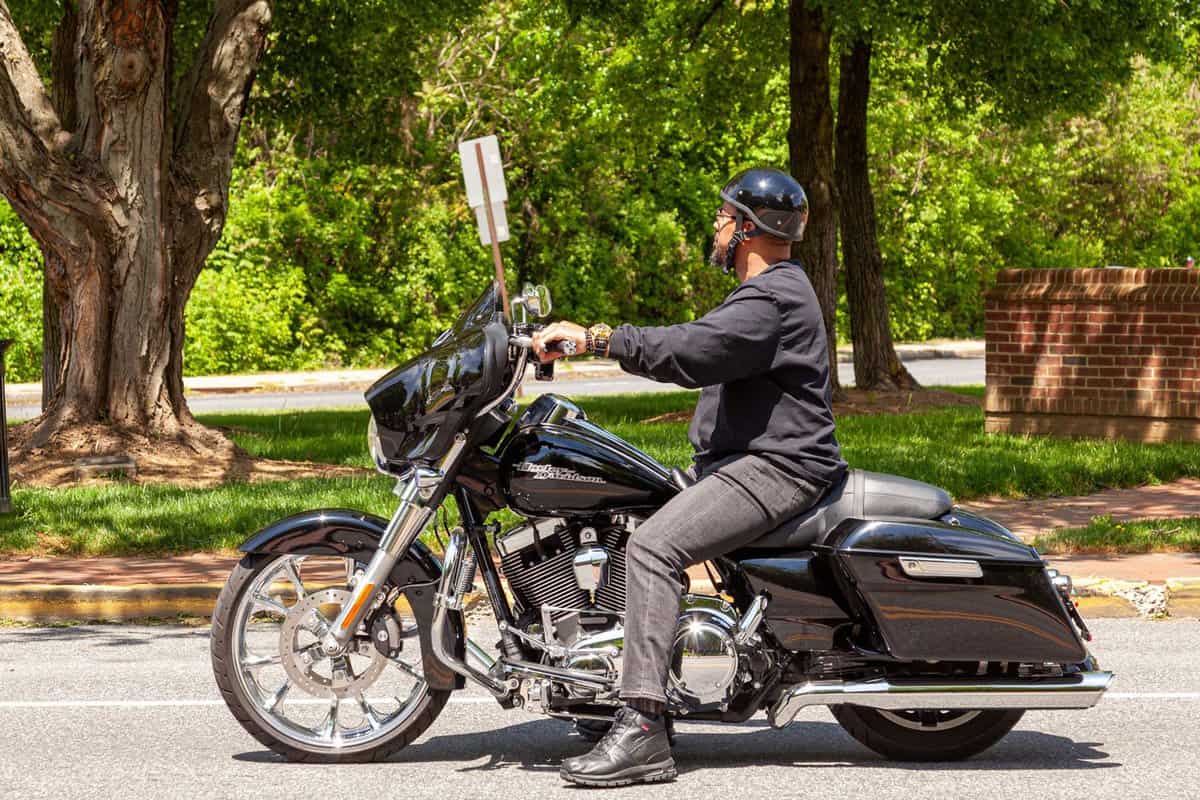
You should consider adjusting your motorcycle's idle speed when it is too low or too high.
When you notice your engine frequently stalling, this could be an indication that the idle speed is too low.
On the other side, if your engine seems to be working too hard when it's not under any load, it might be time to decrease the idle speed.
Adjusting the idle speed when your bike's engine is warmed up is essential.
When the engine has reached its operating temperature, idle speed should typically be set between 700 and 1,000 RPM.
Why is My Motorcycle Idle Too Low?
If your motorcycle has been idling below the recommended level set by the manufacturer, it may indicate a couple of issues.
You may have noticed symptoms such as engine stalling or failing to run without throttle and low air pressure in the engine.
Below are the following reasons why your motorcycle idle speed might be too low:
Idle Screw or the ECU Isn't Set up Correctly
Checking if the idle screw or the ECU has been set properly is the first thing you should check. This can be easily checked and adjusted through a small knob that sticks out of the engine compartment for this purpose.
Lean Air-to-Fuel Ratio
Another possible cause is a lean air-to-fuel ratio, which may result from modifications made to your motorcycle, such as changing the exhaust or air filter.
It's essential to properly tune your bike after making any performance modifications to avoid low idle issues.
Continue Reading: How Hot Does A Motorcycle Exhaust Get?
Dirty or Clogged Fuel Lines
Dirty or clogged fuel lines can also cause low idle. Over time, debris can accumulate within the fuel system, which may impede fuel delivery.
Cleaning or replacing your fuel lines can improve fuel flow and help resolve issues with low idle.
Faulty Ignition System or Spark Plugs
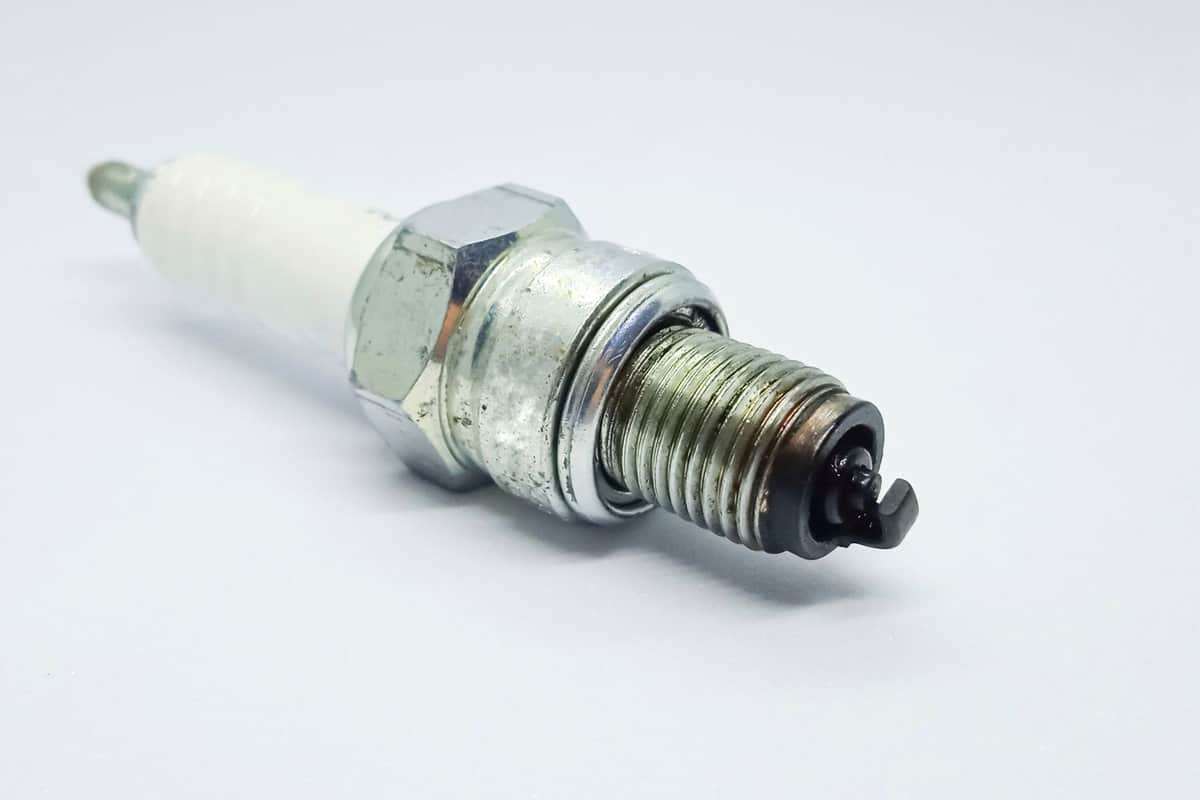
When the spark plugs are worn out or not functioning properly, they may not ignite the air-fuel mixture in the engine cylinders as effectively as they should.
The situation can result in a weak spark and incomplete combustion, which can cause the engine to run poorly and idle too low.
In addition, a faulty ignition system can cause misfires, leading to low idle.
Misfires occur when the spark plug fails to ignite the air-fuel mixture in the cylinder at the right time. This can cause the engine to run unevenly and may lead to stalling.
Regularly inspecting and maintaining these components can help ensure your bike runs smoothly and minimize the chances of a low idle.
Why is My Motorcycle Idle Too High?
If your motorcycle is idling higher, a noise louder than usual may be heard from the motor winding up to higher RPMs.
Additionally, when putting the motorcycle into gear, a loud grinding sound may be heard even when the throttle is not being applied.
Let's explore some of the common causes and how you can potentially address them.
Faulty Oil Temperature Sensor or Water Temperature Sensor
These sensors send signals to the ECU which adjusts the idle speed based on the engine's operating temperature.
If the sensor is faulty, it may send incorrect signals to the ECU, causing the idle speed to be too high. Replacing the faulty sensor can help resolve the issue.
Improperly Synced Throttle Valves
Throttle valves that are out of sync can cause one cylinder to work harder than the other, leading to a high idle speed.
To fix this issue, the throttle valves need to be synced properly by a mechanic.
Leaks in Intake Rubber Hoses
Leaks can cause the engine to receive more air than needed, leading to an increase in idle speed. Inspecting and replacing any damaged intake rubber hoses can help address this issue.
Sticky throttles or throttle cables might also be to blame for high idling speeds.
If the throttle cable is not adjusted properly or is damaged, it may cause the throttle to stick in an open position, leading to a higher idle speed.
Lubricating or adjusting the throttle cables can help resolve this issue. You can also inspect the throttle spring for any signs of damage or wear.
What is a Good Idle Speed for a Motorcycle?
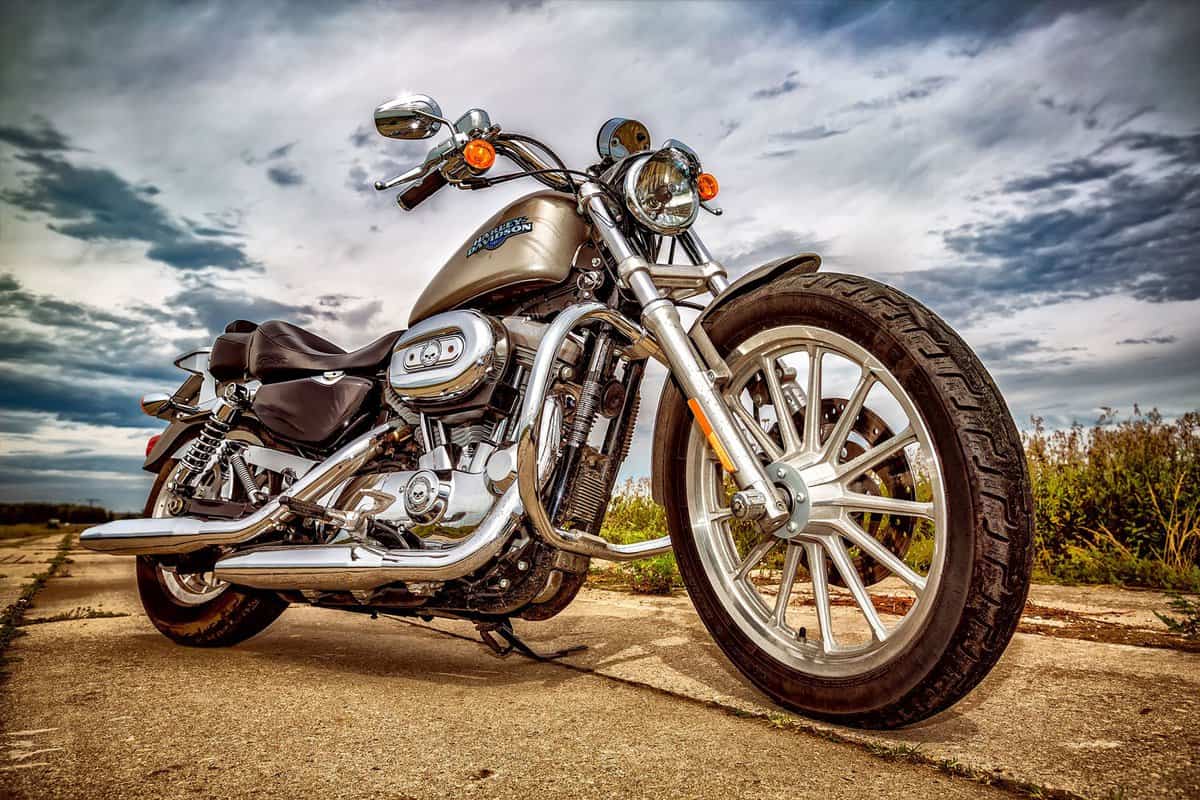
Most motorcycles have an ideal idle speed between 700 and 1,000 RPM when the engine is at its normal operating temperature.
It's important to remember that the idle speed should only be adjusted after the engine reaches its normal operating temperature.
That's because the RPM can be a bit higher while your bike is warming up.
One thing to note is that you should never adjust the idle speed when the choke is engaged, as it can lead to inaccurate readings.
Some motorcycles are equipped with tachometers that display the engine's RPM when it is running.
In that case, make sure to calibrate your tachometer properly so you can have accurate readings to tune your bike's idle speed.
